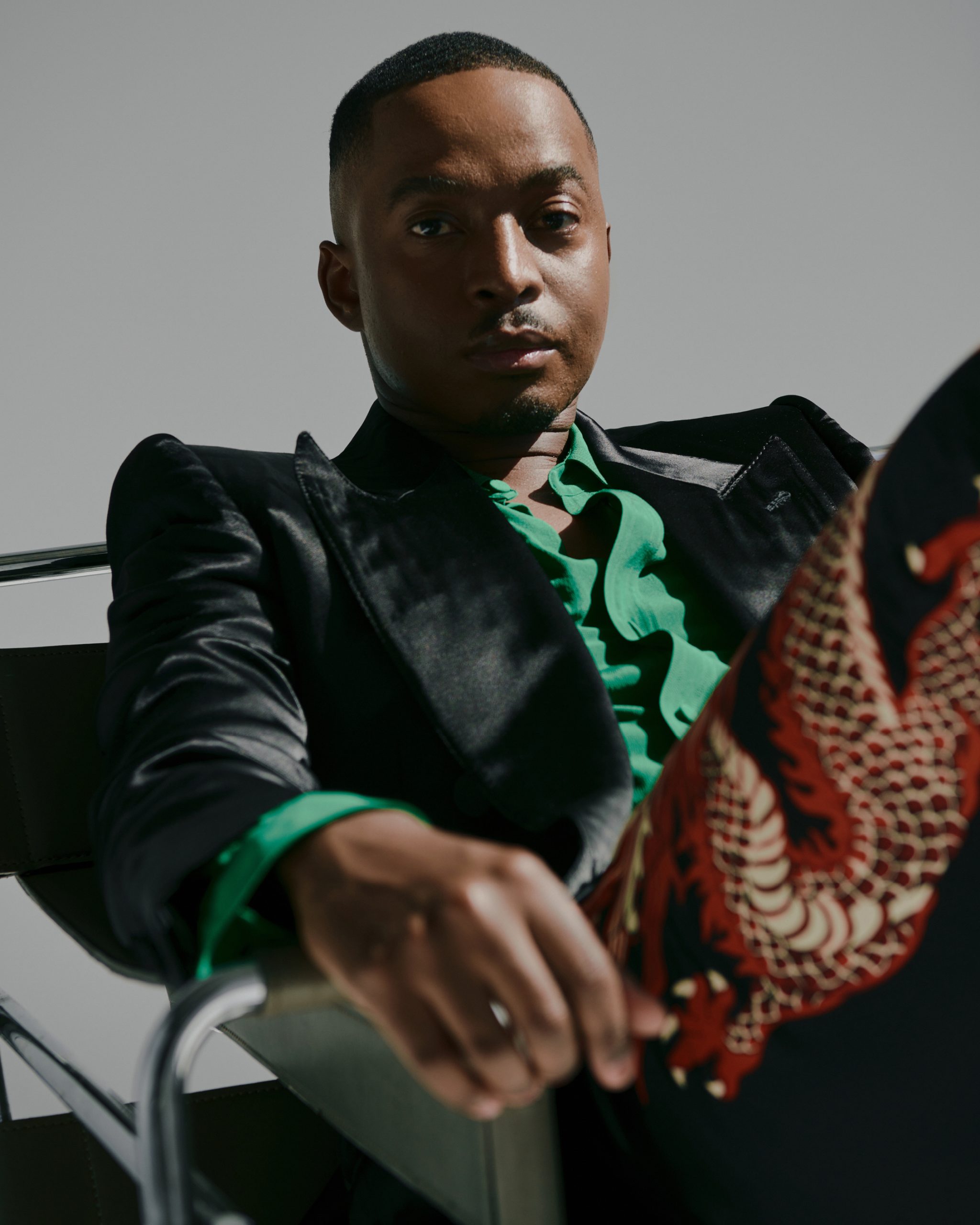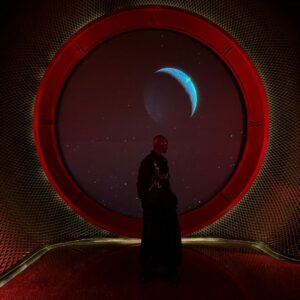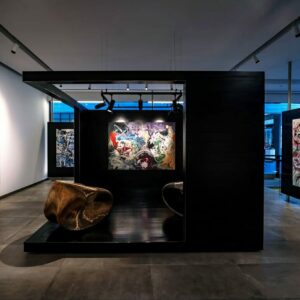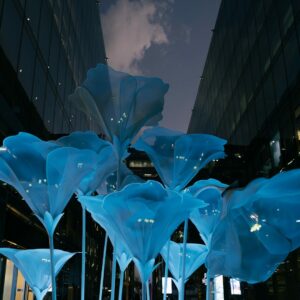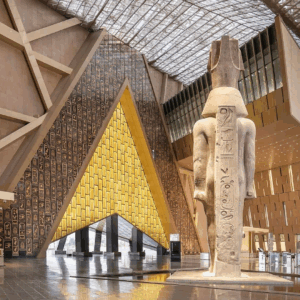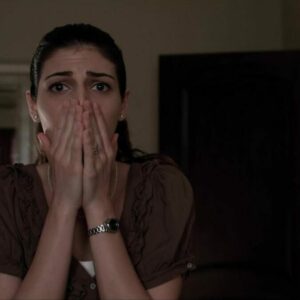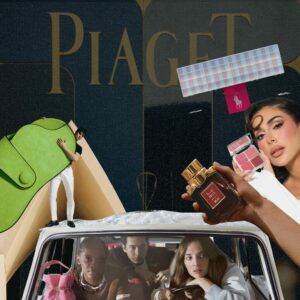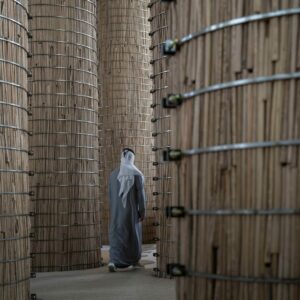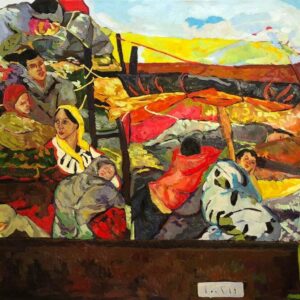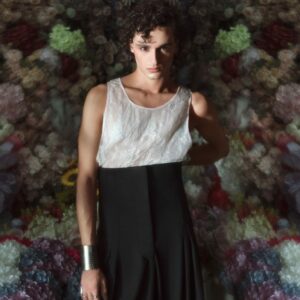Beauty has always been in the eye of Trevor Stuurman. It’s a nuance that’s been harnessed into the fabric of his creative being since infancy, etching itself into every metamorphosis that he goes through as a multi-disciplinary artist traversing realms such as consultancy, curation, styling and photography. “My parents loved admiring beautiful things,” he says proudly. “They weren’t in traditional creative spaces, they were in traditional roles. But they had impeccable taste and style.”
Existing as entrepreneurs, Stuurman’s father navigated South Africa’s diamond industry, whilst his mother sewed clothes, and sold crockery and other household appliances that were missing in their hometown of Kimberly. It was his mother in particular that moulded the creator into the twenty-eight-year-old polymath that he is today. “Operating in multiple spaces felt instinctive to me,” he shrugs. “It allowed me to be agile at the most important moments of my life.” Forming an instrumental part of the cultural zeitgeist in both his home region and the wider continent, Stuurman’s decade-long career has centred on storytelling across each of his respective silos.
When he won ELLE’s 2012 Style Reporter search, they echoed this messaging calling his approach to reporting both “smart” and “creative” highlighting his ability to take South African pop culture to “the next level”. Addressing the continent at large, Stuurman acknowledges in his storytelling that resistance across the region’s textured history has resulted in the beauty that comes in from Africa today. It’s a radiance that translates particularly across his imagery — whether it’s the opulence and serenity that translates across his stills of Bonang Matheba and Rich Minisi or the regality and lineage that transcends digital screens in his featured shoot of Namibia.
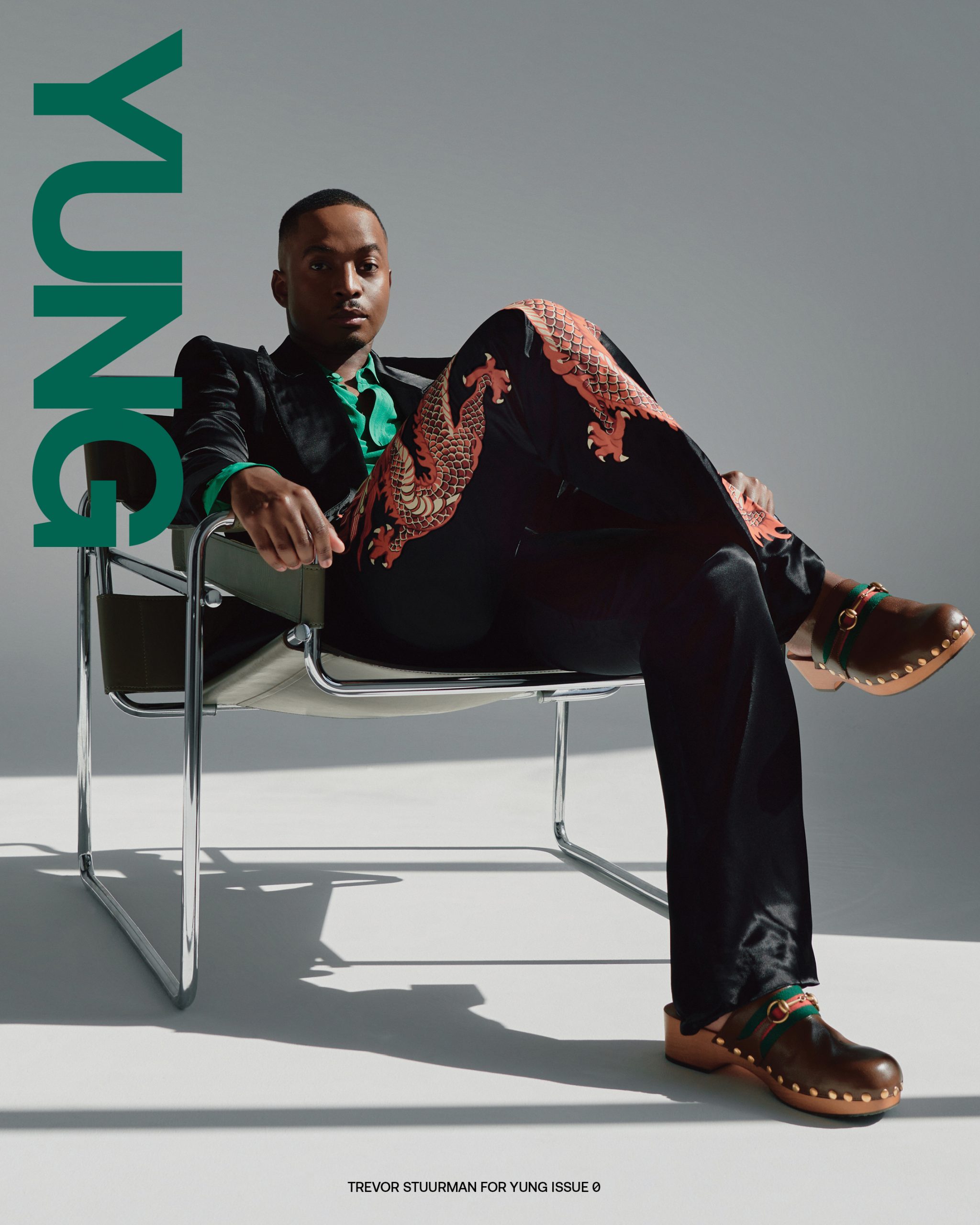
Finding tranquillity in centring himself in his living room and beyond — away from technology and focused on his breathing in his free time — the concept of home is paramount to Stuurman in 2022, even though admittedly he found the last twenty-four months challenging being tied to it, rather than travelling. One of his current exhibitions in London, titled ‘The Beauty of Africa’, will centre on his wider ancestral home, determined to change the narrative.
Formed in the wake of consultancy and styling assistance on projects such as Black Is King and Black Panther — which both received praise, as well as criticism for their portrayal of Pan-Africanism and the continent — the exhibit sees Stuurman in 360-degree ownership and direction. “It’s beautiful to be part of and leading change,” he affirms on representations of the continent in 2022. “We’re all conquering and breaking barriers, it’s about thinking outside of your own understanding of the continent.”

NICOLAS-TYRELL SCOTT: You’ve mentioned before that your mother, in particular, has worn multiple hats in her own career. Did that foundation equip you to be both multifaceted and polymathic in your own vocation?
TREVOR STUURMAN: Completely, I think that I just grew up with just great role-modelling in terms of being limitless. I was able to understand that both my mother and father were forced into their positions for survival, they always wanted to make it work and wanted the best for us and that meant that it was about adapting and moving and trying something new if one thing didn’t work out. I was fortunate enough to learn those business practices very early on — going with the flow and never going off-track. Constantly moving forward was a great life lesson.
NTS: You speak a lot about ‘survival mode’ here. When you talk about your parents and navigating that, where do you think that this comes from?
TS: I think it’s wired into our DNA as Africans. We’ve gone through so much as a group of people and what’s always remained is resilience. Resilience for us is our beauty — it’s not always necessarily a violent act. The way we’ve managed to do things, resistance has become our way of life. The fact that we are still here, and able, and creating — that’s resistance. So many things were set up to destroy us. It’s something that we carry so well.
NTS: Does that survival mode creep up on you now?
TS: Not necessarily, but the pandemic taught me a lot. We all had to pivot as creatives, I had to push myself really hard — especially without the travel to inspire me which led to loads of having to be patient, and think on my feet. It felt like the start of my career again because of those challenges.
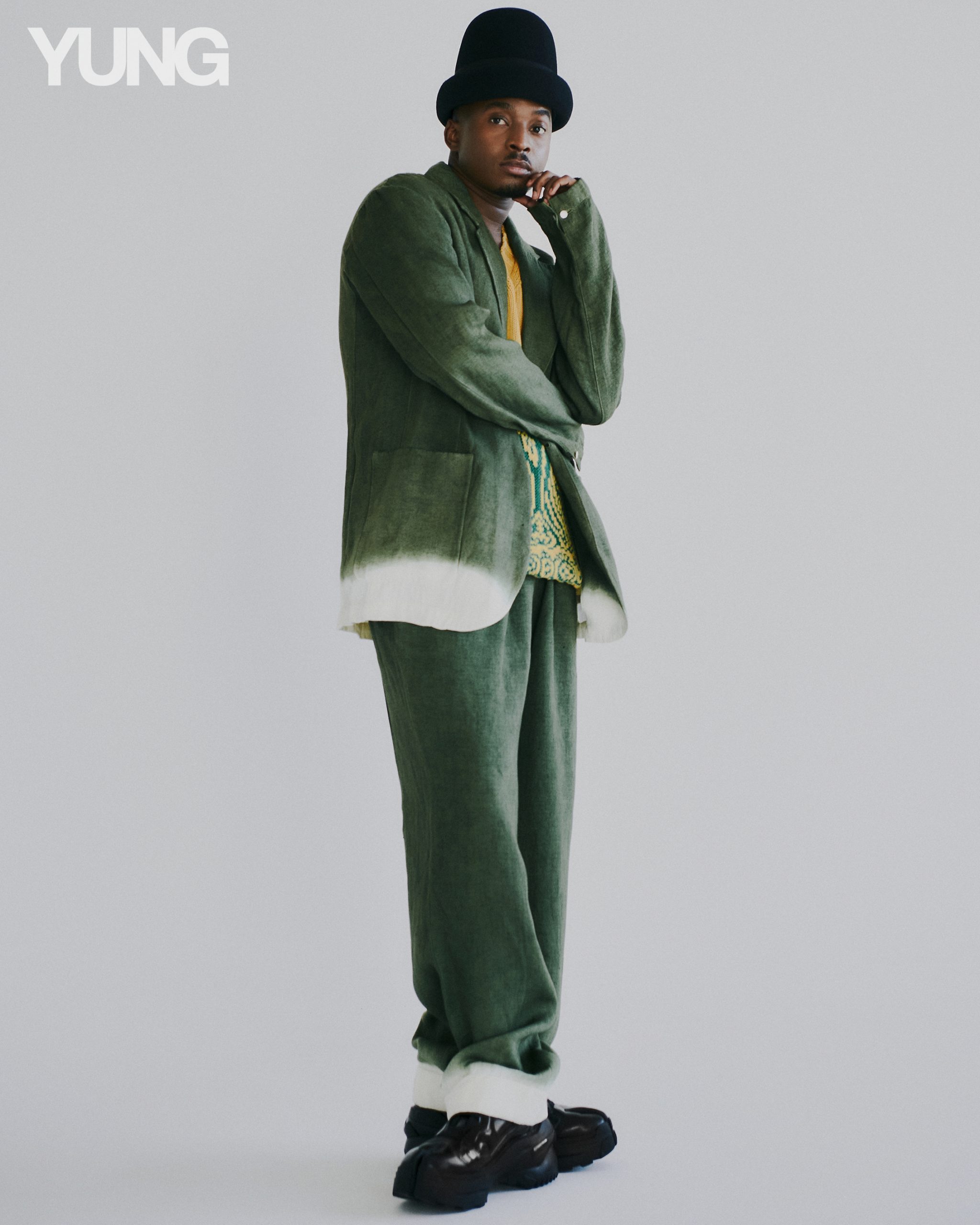
NTS: Going back then, being in that mode yourself, at the impetus of your career, starting at ELLE, what were some of the lessons you learned there that helped inform and nurture you as a storyteller?
TS: At that time I was studying filmmaking, and that course, combined with my experiences at ELLE, actually taught me the power there is in storytelling. ELLE refined my ability to do this whilst also becoming a professional creative. I think it was great that both my course and ELLE were happening in parallel. In school I would learn about the target audience, who am I speaking to, messaging and at what time. On the ground I was learning in a very practical way. The fashion industry is quite direct, and you need to get it — so those were the quick response times, especially back then because the weight of the work was in the magazine. The world was moving from analogue to digital migration too, so no one had time to wait to digest things.
NTS: And your course centred on filmmaking, was that choice intentional or more instinctive to you at the time of deciding what to study?
TS: It was quite organic actually. I wanted to study advertising, but the application process, I found, was quite technical and it’s almost like there was no mentorship. I didn’t have anyone to ask at the time to clarify if that was the case across that whole course or just in my head during the application. Filmmaking, however, was easier to me, but I knew that it was the type of space that I saw myself in. It felt safe, and it was a great bridge into the industry; with filmmaking it always finds its way of roping me back in. The amount of people it involves to get things done can frustrate me because I’m independent, it takes time to get a single output, but that’s the one reason that I do it from time to time, instead of full time.
NTS: Did Black is King, Black Panther or Coming to America 2 involve any of those technicalities?
TS: Those opportunities really came about organically. I wouldn’t say any Coming To America 2 or Black Panther were under those technicalities, because Black Panther I shot the artwork, which came at the end of the film and Coming To America 2 was the beauty campaign so again, the end of the filmmaking process. But Black Is King was more robust and a lot of decision-makers were at the table.
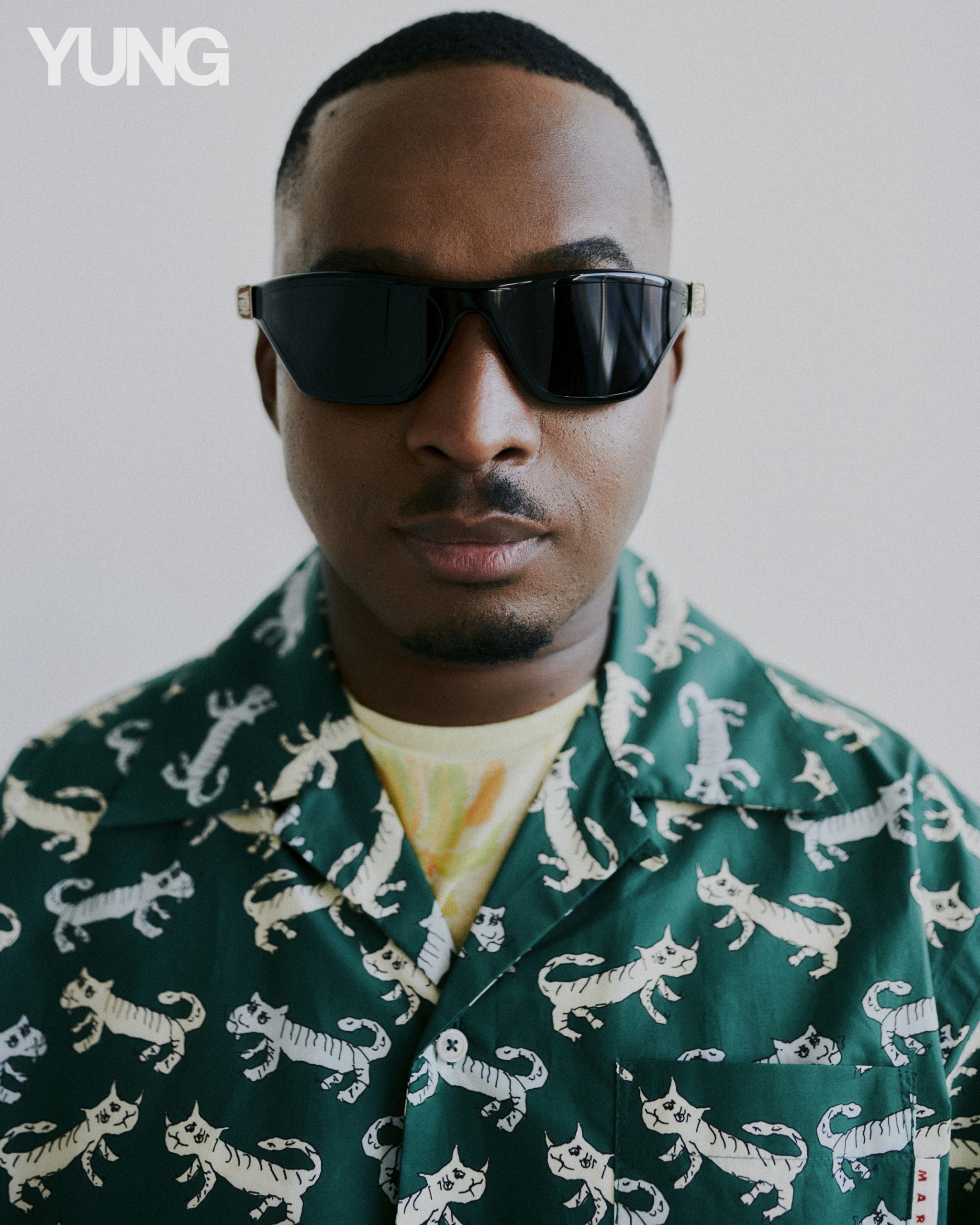
NTS: Define opportunities coming to you organically. What does that look like practically in those three scenarios for a storyteller like yourself?
TS: I guess it’s like storytelling being part of everything I do. Like with Insta Stories, I put a lot of effort into it, because it’s almost like having a trained eye, you’re able to curate your composition and it always has some thought behind it whilst trying to balance being organic.
NTS: So you’re saying that storytelling manifests itself in most of your endeavours allowing potential vendors to see your work in conventional and unconventional spaces?
TS: Essentially yes.
NTS: You document the contemporary face of both the wider African continent and South Africa a lot in your work — your latest exhibitions for example will feature a lot of both, with one being your home — what are some practices you put in place or have felt best inform your eye when capturing contemporary diasporic moments and separating that with what has come before?
TS: It’s two-fold because I think with the internet there is a better, it’s not perfect, but a better representation of the lived experiences on the continent. I think what sometimes happens is this long-distance relationship that happens with Africa, where people love the continent from afar, but don’t actually spend a lot of time inside and only capture the best parts, when it’s so diverse — there’s so much to consider and to unpack. I think time and really absorbing each and every part of where I go has helped me, being from here helps me to navigate.
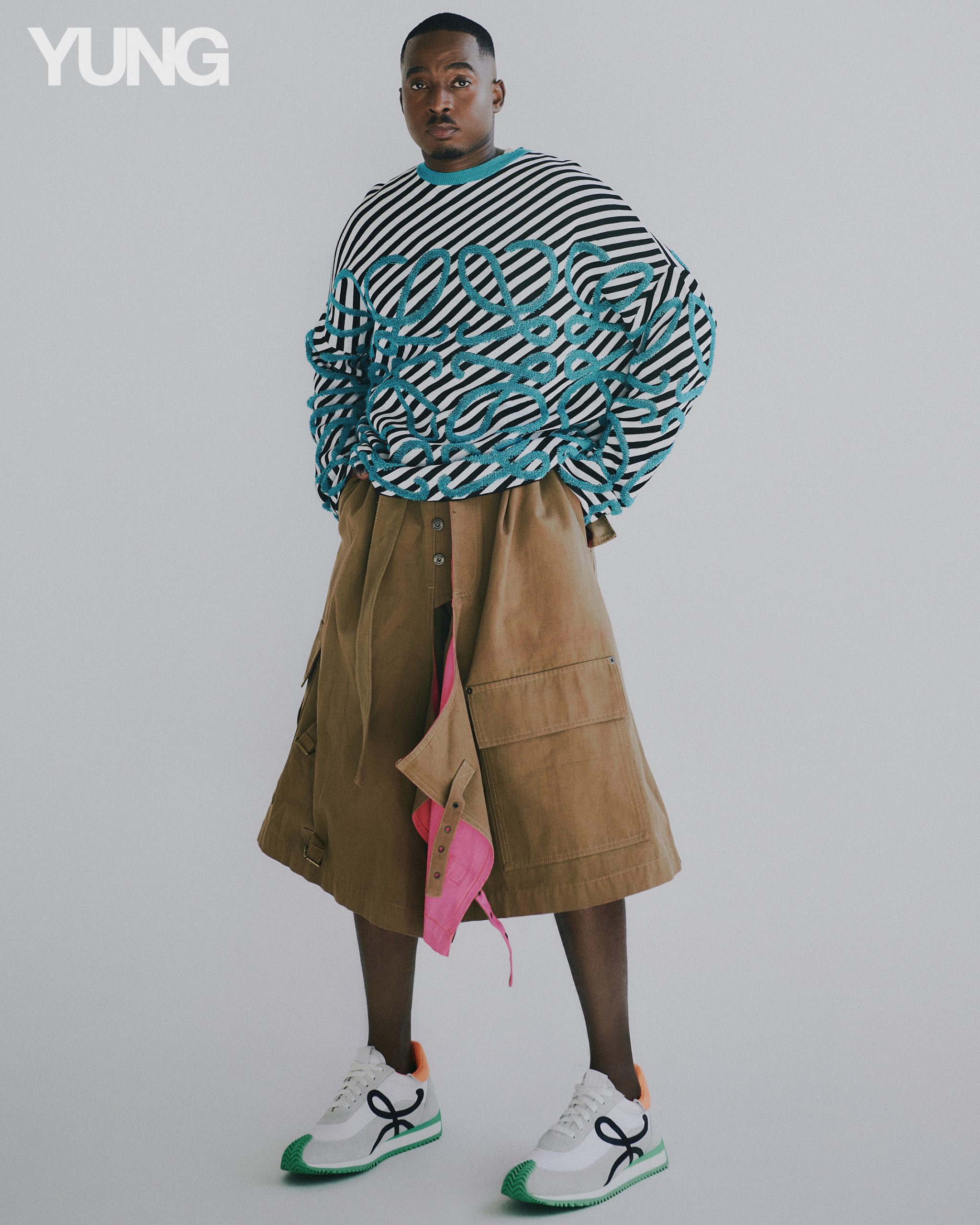
NTS: At this moment, of more Western interest in the content, and in the taxonomy of ideas, how do you feel as a member of the creative arts watching this process happening?
TS: I think it’s good because it gives us opportunities to be in the driver’s seat instead of being dictated to. Now the conversation involves us being admins of the group chat.
NTS: You say admins of the group chat. At this moment, however, critics have said — and even in the pushback that I’ve heard at exhibitions on this topic — that the equity in this situation and moment can be exploited when these transactions between the West and countries in Africa. Have you seen that, and how would you respond to those criticisms?
TS: I think exploitation is unfortunately the part of the game wherever you are. Anything that’s profitable comes with exploitation. For example, I’m part of a collective called Botho and what we had last month was the first artist-led art fair, but instead of booths with different galleries we centred booths with different artists, allowing them to control their art in an artistic sense, but in a business too. In the past there’s been a barrier between artists, the communities they make work for and the dealers. We want to erase that line and bridge the gap by creating an open dialogue.
NTS: With the vast representations across the world, in Western spaces as well advancing behind kente cloths — for example the rise in Africa Fashion Week in the UK as well as greater discussion points of the continent in the wake of Black Panther and the rise of Amapiano and Highlife and ‘Afro-pop’ — can you pinpoint a time across the last decade where you started noticing a shift in textured experiences being digested?
TS: It feels like it’s a constant evolution. What has been happening is, I guess, when let’s say street-style; there was a big boom about street-style, things like The Sartorialist. That manifested in South Africa to wear more of what they wanted and transcend their limitations and circumstances. Then Afro-futurism reimagined who we are and re-framed our narrative of what Africa could look like. I love even the projections of not everyone coming from royalty, it’s all fluid and is bridging a global language that demands more from our experiences and specificity. Even the internet allows photographers from here to distribute their own visual markers which build a movement of nuance.
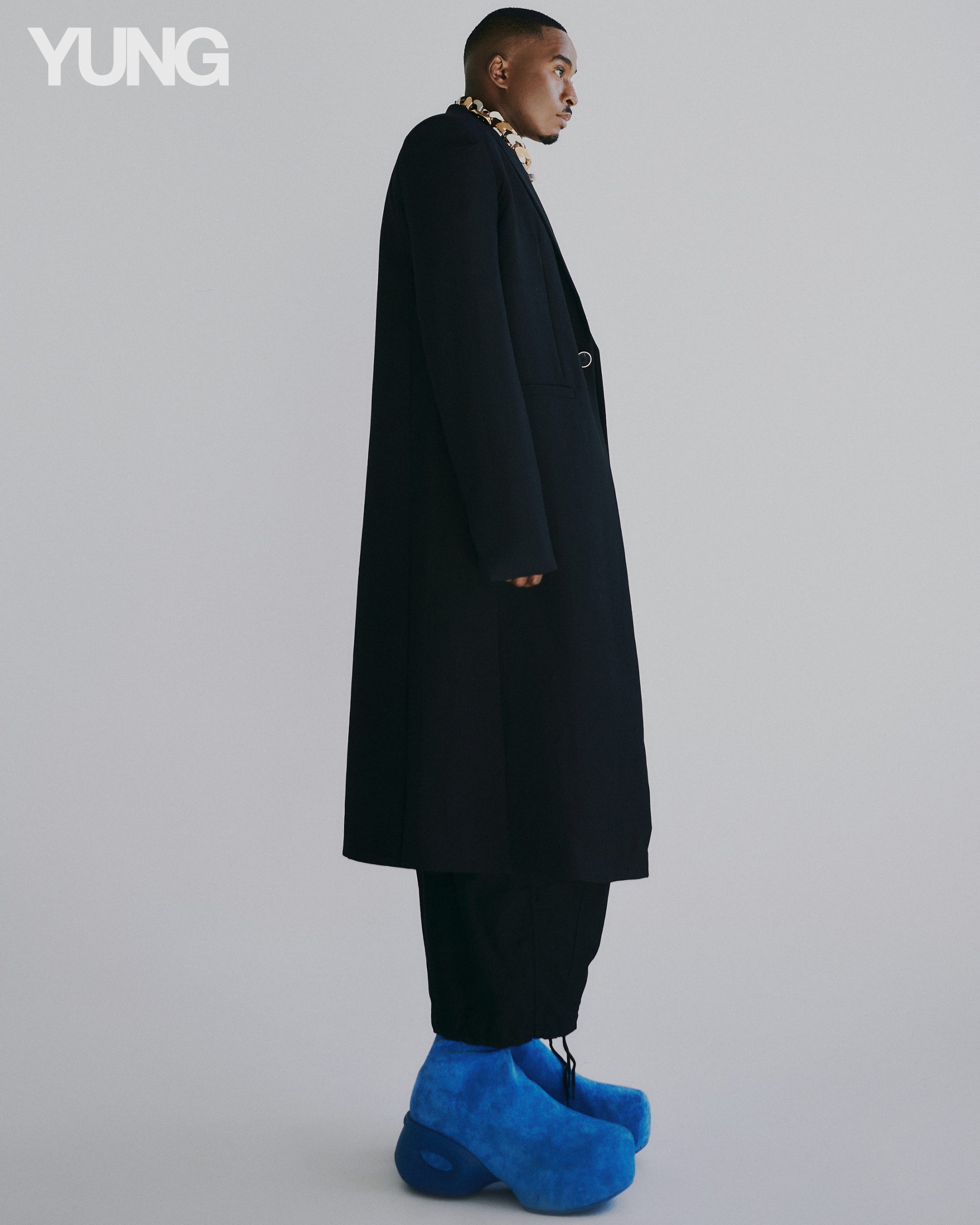
NTS: Describe your relationship with travel and how it’s helped in nurturing you creatively and as a person?
TS: Travel allows you to be on the ground and absorb different ways of life and cultures. When you experience that, I think it only brings you closer to your own source and roots. That’s how I felt. Every time I travel I’m reminded of where I come from. It allows me to stretch my imagination and build my reference points as a creative person. It’s almost like a toolbox with the mind; you’re able to expand on that when you land in a new place. It sharpens your eye and global perspective.
NTS: Has there been a region that has instinctively reminded you of South Africa in any way?
TS: Senegal. It’s completely different, but it did.
NTS: Really?
TS: Yeah it’s just the feeling I get there, it wasn’t necessarily tangible. I guess it’s the creative community there and the surge of creativity and how palpable it is. Our foods are different, the language but it’s the free-thinking. There’s just that feeling of being at home; I’m always wanting to go back and feel how I feel there.
NTS: Describe the concept of home, what does the word mean to you and how has it translated across your life to date?
TS: In life, every human being strives to find a sense of belonging and home is where it’s at. It doesn’t have to be a place where you’re born. It can be the work you do, a chosen family, or the people you’re around; it’s any space that makes you feel safe and where you can truly be at peace. It’s a place where you’re able to visibly dream and unplug and not think. Exploring that is always interesting to me and I ultimately think that it’s my purpose in life to continue unpacking the sweet case of the home and what that can feel like.
